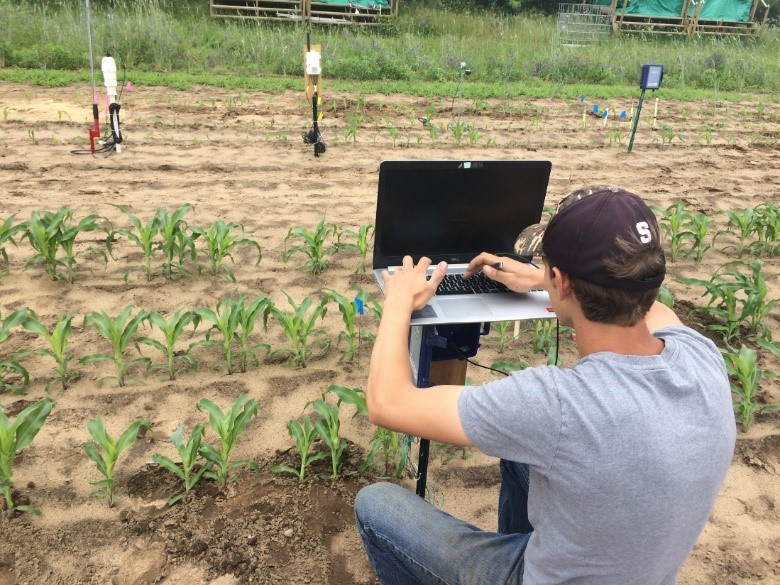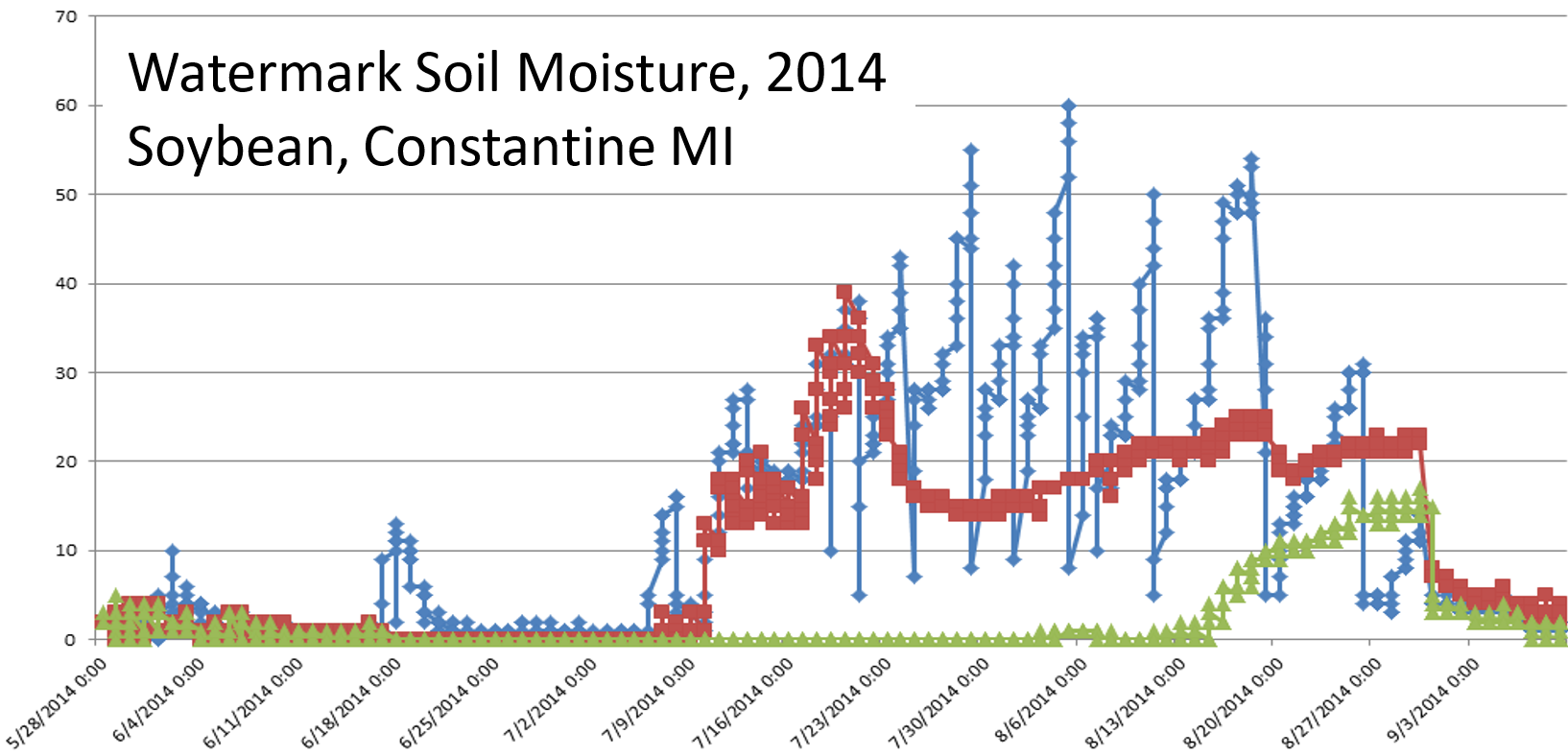Using soil moisture meters to complement irrigation scheduling
Soil moisture monitoring can be used as an irrigation management tool.

There are several tools available for assisting irrigators in making irrigation scheduling decisions. These include paper copies on a clip board that can stay in the truck and Excel spreadsheets that assist in calculating water demand to prove graphical outputs. All scheduling methods rely on estimated crop water usage that uses a reference value of evapotranspiration (ET) (a well-watered grass) derived from weather station data that is then modified to reflect the crop being irrigated. We are developing methods to use satellite data to estimate ET and crop water stress, then making that data available to irrigators.
These tools are helpful but cannot replace field observations of soil moisture at multiple depths and crop conditions. Soil moisture sensors can be a valuable tool to complement irrigation scheduling. All sensors use the fact that water transmits an electrical charge or electrometric pulse better than soil. To provide useful information, the sensors must be installed in representative locations in the field, be properly installed with good contact between the sensors and the soil and the results interrupted knowing soil texture.

The cost of sensor systems range in price from $440 for an Irrometer handheld meter with five sensors to $3,800 for a Campbell Scientific with continuous data collection, five sensors and remote access to the data. For a detailed breakdown of examples of cost and a description of various sensors, see “Comparison of Soil Moisture Sensors Readings and Introduction of Hydrus Model from Michigan State University Extension.
An affordable sensor system is being developed that includes five sensors, a data logger and remote access to continuous data that can be viewed on a smart phone, tablet or computer. We expect the components for the system to cost about $200 and less than $30 a year for the remote access.




 Print
Print Email
Email